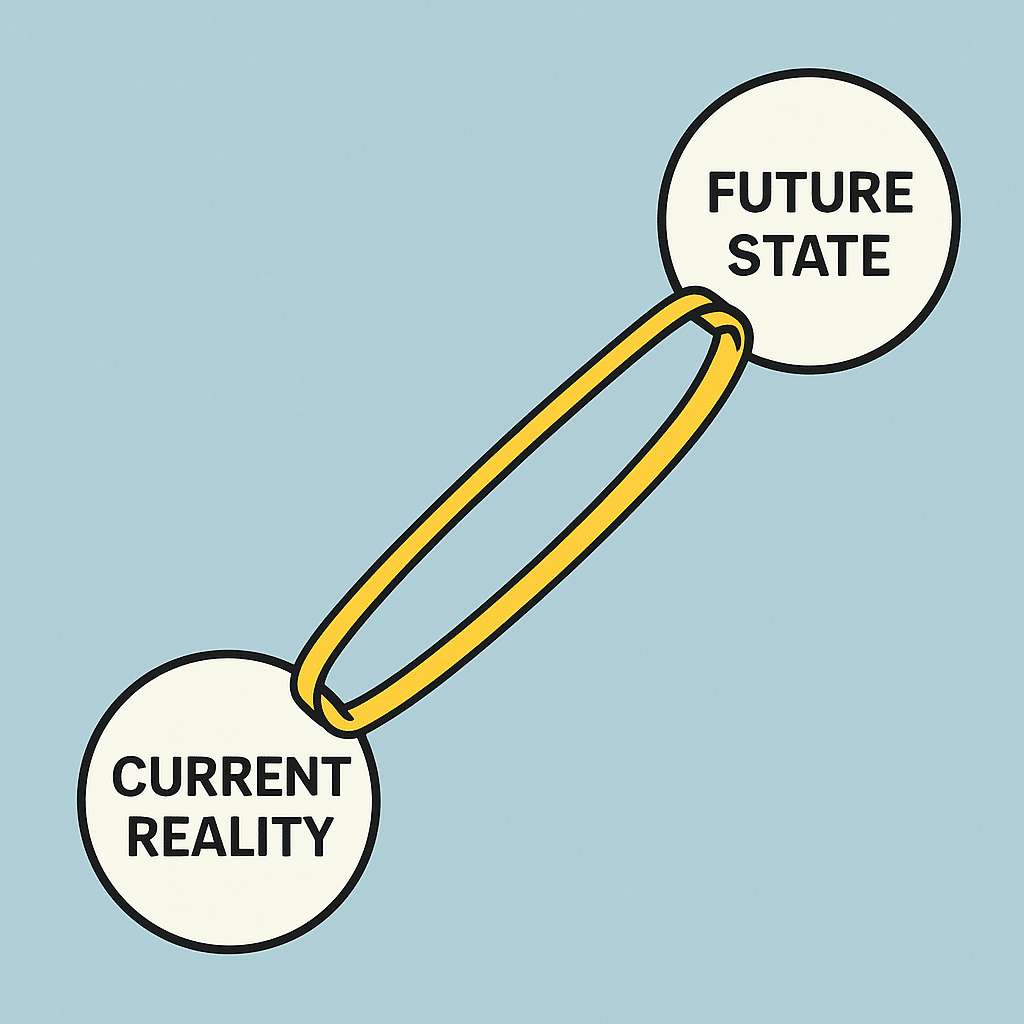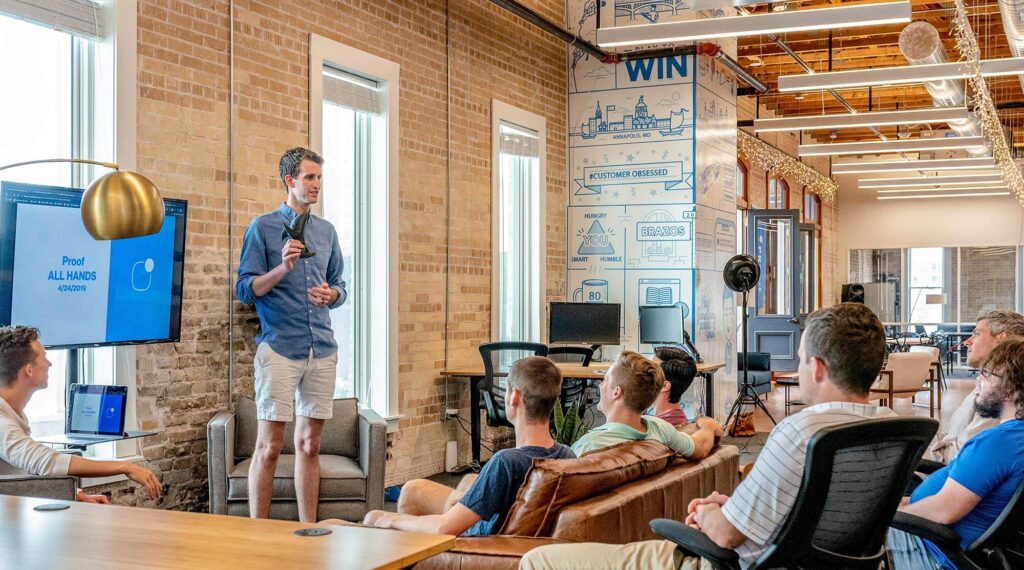2 October 2025
Navigating Change via Tensions: From Episodic Events to Continuous Transformation
Π From Episodic Change to Continuous Learning
When we talk about organisational change, the default picture for many is a program: a big, episodic event, often carefully designed at the top and then “rolled out” to everyone else. Yet, as Peter Senge pointed out in The Fifth Discipline, true learning organisations don’t move forward through mandates or blueprints alone. They navigate by recognising the gap between current reality and future possibility.

Π Navigating via Tensions
This idea is central to Beliminal’s work in enterprise agility. We call it navigating via tension. Tensions are not problems to be eliminated, but signals of potential, an energy created by the distance between where we are today and where we aspire to be. If we can learn to work with them, tensions become a compass for ongoing adaptation.
Π Why Tensions Matter in Change
Traditional change management assumes a linear process: design, plan, implement, sustain. But as the Enterprise Agility Primer notes, change is not episodic; it is continuous and needs to be part of how we work every day.
By navigating via tension, organisations shift their stance. Instead of trying to control the path upfront, they identify where people experience friction, aspiration, or dissatisfaction in their current reality. These tensions highlight the places where experimentation can begin.
Crucially, this turns resistance into an ally. What we often label as “resistance to change” is, in fact, a form of tension. People resist change not because they don’t care, but because of competing commitments and underlying tensions [2]. Something in the proposed solution doesn’t meet their needs, or it clashes with their lived reality. Rather than pushing harder, we can get curious:
- What tension is this resistance pointing to?
- What unmet need or unspoken aspiration is surfacing here?
When we shift from “doing change to people” to “doing change with people,” resistance becomes a source of insight and energy for shaping meaningful experiments.
Π From Episodic Change to Continuous Participation
Beliminal’s Enterprise Agility approach is grounded in two pillars:
- Continuous Participatory Change – everyone can contribute to shaping how work evolves.
- People-Centric Organisational Design – designing structures and systems that serve people and value creation, not bureaucracy.
Navigating via tension sits at the heart of these pillars. It gives us a practical way to:
- Use empiricism – design small experiments based on the tensions we notice, rather than large-scale plans.
- Identify motives – surface the “why” behind a change, ensuring purpose and energy are aligned.
- Respect the journey – acknowledge both the past and the ongoing nature of adaptation.
- Overcome inertia – by turning resistance into data and involving people in co-creating solutions.
Build internal capability – empowering people to see and respond to tensions themselves, so change is not outsourced but embedded.
Π Navigating with People, Not Over Them
Change led through tension is human change. It recognises that people don’t wake up eager to follow a plan someone else wrote; they wake up with concerns, ideas, frustrations, and hopes. By tuning into those tensions, leaders and teams can co-design experiments that address real needs in the present, while building momentum toward the future.
This is how change becomes healthy and sustainable: not as a program to be delivered, but as an ongoing conversation, an act of learning together, and a way of working that is always evolving.
At Beliminal, we’ve seen again and again that when organisations embrace this principle, navigating via tension, they unlock adaptability, resilience, and continuous growth.
Leadership is helping people face adaptive challenges, which always involve tension and discomfort between old habits and new demands [3]. Leaders can navigate complex environments by sensing tensions, running safe-to-fail experiments, and adapting as patterns emerge [4]. So what tensions are you noticing in your organisation right now? What experiments could you try with your teams to work with them, rather than against them?
References
[1] “The gap between vision and current reality is also a source of energy. If there were no gap, there would be no need for any action. This is called ‘creative tension’.”
— Peter M. Senge, The Fifth Discipline: The Art and Practice of the Learning Organization (1990), Chapter 9, Personal Mastery
[2] Kegan, R., & Lahey, L. L. (2009). Immunity to Change: How to Overcome It and Unlock the Potential in Yourself and Your Organization (Harvard Business Press).
[3] Heifetz, R. A. (1994). Leadership Without Easy Answers (Harvard University Press).
[4] Snowden, D. J. (2002). Complex acts of knowing: paradox and descriptive self-awareness. Journal of Knowledge Management, 6(2), 100–111.
Π Ready to change how you do change?
📢 Book a conversation. Let’s discuss how we can help you bring about sustainable change.
💡 Because enterprise agility is like fitness, you have to keep working at it, otherwise you get fat.

Develop Your Skills
As a leader in an organisation develop your Agile Leadership skills with our over-arching Agile Leadership training.
If you would like support in building high-performing teams consider our Consulting Services, we can put together a programme for team development designed specifically for your teams and organisation. Reach out today to discuss any support that you need.

